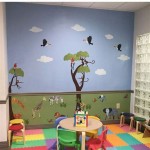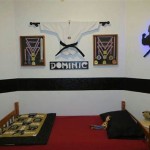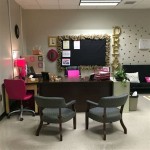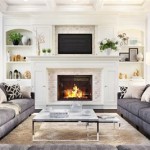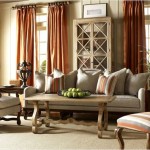```html
How To Make A Room Look Professionally Decorated
Achieving a professionally decorated room involves careful planning, attention to detail, and an understanding of fundamental design principles. It's more than just filling a space with furniture; it's about creating a cohesive and aesthetically pleasing environment that reflects personal style while adhering to timeless design tenets. A professionally designed room should feel balanced, functional, and visually appealing.
Planning and Preparation: The Foundation of Design
Before moving any furniture or picking up a paintbrush, the initial stage requires thoughtful planning. This groundwork will save time, money, and potential design missteps. The process begins with defining the room's purpose. Is it a living room for relaxation and entertainment, a home office requiring focused productivity, or a bedroom intended for restful sleep? Understanding the room's primary function dictates furniture selection, layout, and overall ambiance.
Once the function is defined, measuring the room’s dimensions is crucial. Accurate measurements of wall lengths, ceiling height, window and door placements, and any architectural features are essential. These measurements inform furniture scale and placement. Creating a floor plan, either digitally or by hand, allows for visualizing different furniture arrangements and identifying potential spatial constraints. Online room planning tools can assist with this process, allowing for virtual furniture placement and experimentation.
Next, inspiration gathering plays a vital role. Look to interior design magazines, online platforms like Pinterest and Houzz, or even hotel lobbies and show homes for inspirational ideas. Create a mood board, either physical or digital, containing images, colors, textures, and patterns that resonate. This mood board serves as a visual guide throughout the decorating process, ensuring a cohesive design direction. Identifying a preferred style, such as minimalist, modern, traditional, or bohemian, provides a framework for selecting furniture and accessories.
Finally, establishing a budget is a critical step. Decorating a room can quickly become expensive, so setting a realistic budget beforehand prevents overspending. Allocate funds for each aspect of the room, including furniture, paint, lighting, accessories, and professional services (if needed). Track expenses diligently to ensure adherence to the budget throughout the project.
Key Design Elements: Color, Texture, and Light
The effective use of color, texture, and light are fundamental to creating a professionally designed space. These elements work in harmony to establish the room's mood, visual interest, and overall aesthetic.
Color plays a significant role in influencing the atmosphere of a room. Begin by selecting a color palette. A common approach is the 60-30-10 rule: 60% of the room is the dominant color (often walls), 30% is a secondary color (furniture, rugs), and 10% is an accent color (accessories, artwork). Neutral color palettes, such as grays, beiges, and whites, provide a versatile backdrop that allows for pops of color through accessories. Warm colors like reds, oranges, and yellows tend to create a cozy and inviting atmosphere, while cool colors like blues, greens, and purples evoke a sense of tranquility and spaciousness. Testing paint samples on the walls under different lighting conditions before committing to a color is essential.
Texture adds depth and visual interest to a room. Incorporate a variety of textures through fabrics, materials, and finishes. Consider using a mix of smooth and rough textures, such as a velvet sofa paired with a woven rug or a linen throw blanket. Natural materials like wood, stone, and leather also introduce texture. Layering textures creates a more dynamic and visually engaging space. For example, adding textured pillows to a smooth sofa or placing a textured throw over a sleek armchair.
Lighting is often overlooked but is crucial for creating the desired ambiance. A well-lit room is essential for both functionality and aesthetics. Layered lighting is the key to professional design. This includes ambient lighting (general room illumination), task lighting (for specific activities), and accent lighting (to highlight artwork or architectural features). Ambient lighting can be achieved with overhead fixtures, such as chandeliers or recessed lighting. Task lighting includes lamps for reading or desk work. Accent lighting can be achieved with spotlights or wall sconces. Consider the color temperature of light bulbs; warm light (2700-3000K) creates a cozy atmosphere, while cool light (3500-4000K) is better for task-oriented spaces. Dimmers allow for adjusting the light intensity to suit different moods and activities.
Furniture and Accessories: Selection and Arrangement
Selecting the right furniture and accessories and arranging them effectively is paramount to creating a professionally decorated room. This involves considering scale, proportion, style, and functionality.
Furniture selection should be guided by the room's function and the overall design style. Choose pieces that are appropriately scaled for the room's size. Oversized furniture can overwhelm a small space, while undersized furniture can look lost in a large room. Consider the flow of traffic within the room and arrange furniture to facilitate easy movement. A focal point, such as a fireplace, a large window, or a statement piece of furniture, can help define the layout. Arrange furniture around the focal point to create a sense of balance and visual harmony. Avoid pushing all furniture against the walls; instead, consider creating conversation areas by floating furniture in the center of the room.
Area rugs can define spaces, add warmth, and introduce pattern and color. Choose a rug that is appropriately sized for the furniture arrangement. Ideally, all furniture legs should be on the rug, or at least the front legs should be. Leaving a consistent amount of exposed flooring around the perimeter of the rug creates a more balanced look.
Accessories are the details that add personality and visual interest to a room. This can include artwork, mirrors, pillows, throws, plants, and decorative objects. Choose accessories that complement the room's color palette and style. Grouping accessories together in odd numbers (e.g., three vases, five candles) tends to be more visually appealing than even numbers. Hanging artwork at eye level ensures comfortable viewing. Mirrors can enhance natural light and create the illusion of more space. Incorporating plants adds life and freshness to a room. Avoid cluttering surfaces with too many accessories; less is often more. A curated selection of meaningful and visually appealing items creates a more sophisticated and polished look.
Window treatments are also crucial. Curtains, blinds, and shades can control light, provide privacy, and add to the room's aesthetic. Choose window treatments that complement the room's style and color palette. Long curtains that reach the floor can visually elongate the space. Layering window treatments, such as blinds with curtains, provides flexibility in controlling light and privacy.
Finally, maintain consistency throughout the room. While it's important to incorporate variety and visual interest, ensure that the overall design feels cohesive and unified. This can be achieved by repeating colors, patterns, or textures throughout the space. A professionally decorated room should feel intentional and thoughtfully curated, reflecting a harmonious balance of style, function, and personal expression.
```
10 Ways To Decorate Your House Like The Pros

How To Decorate A Living Room 11 Designer Tips Houzz

How To Decorate A Living Room 11 Designer Tips Houzz

How To Decorate Your New Home Like A Professional Pacaso

How To Decorate Your New Home Like A Professional Pacaso

How To Decorate A Living Room 11 Designer Tips Houzz
:strip_icc()/cdn.cliqueinc.com__cache__posts__212361__-2030968-1483470364.700x0c-8571e60cad7b42a981ab29ae10b5c153-497b002f87af4747b2ab38b560e7c0fd.jpg?strip=all)
How To Decorate A Living Room 20 Ideas And Common Mistakes

3 Tricks To Make Your Home Look Like It Was Professionally Decorated

12 Diy Tricks To Make Your Home Look Professionally Decorated Homify
How To Make A Bedroom Look Better For Free According Designers
